If you tend to think of bamboo as a giant grass from Asia with hollow stems, and roots that will run rampant all over your well-tempered garden, then it’s time to learn about the genus Chusquea. While most of those assumptions may be pretty accurate most of the time, the only word in that sentence that applies to Chusquea is grass. So what’s the story with this atypical genus of bamboo?
The genus Chusquea consists of more than 150 species of bamboo and an untold number of additional subspecies or cultivars. A neotropical group of bamboo, these woody grasses are native to the tropics and subtropics of the New World, that is, Central and South America, rather than China and the Far East. Their natural range extends from central Mexico down through Chile.
Though classified as tropical bamboos, many species of Chusquea are relatively cold-tolerant and adaptable to more temperate climates. They are often called South American mountain bamboos. And unlike some of the more common kinds of bamboo, Chusqueas have a clumping root system, and not those running rhizomes that can turn invasive. But maybe the most unusual and distinct feature of all is the fact that these bamboos have solid culms, and not the hollow stems that you would expect.
In the following article, we’ll examine the distinguishing characteristics of the genus Chusquea. Hopefully, this will help you to appreciate the amazing diversity within the world of bamboo. We’ll also explain what makes Chusqueas unusual and important, and potentially a great addition to your garden. Finally, we’ll take a closer look at a few species in particular, highlighting the diversity of this genus.
NOTE: This article first appeared in October 2020, most recently updated in October 2024.
Bamboo Classification
This is part of an ongoing series about different types and species of bamboo. To learn more about this fascinating and diverse sub-family of grasses, check out these other articles.
- Running bamboo
- Clumping bamboo
- Genus Bambusa: Paragon of bamboo
- Genus Chimonobambusa
- Genus Fargesia: Clumping bamboo for cold climates
- Genus Otatea: Mexican Weeping Bamboo
- Genus Phyllostachys
- Native bamboos of North America: Arundinaria
- Herbaceous bamboo: Olyreae
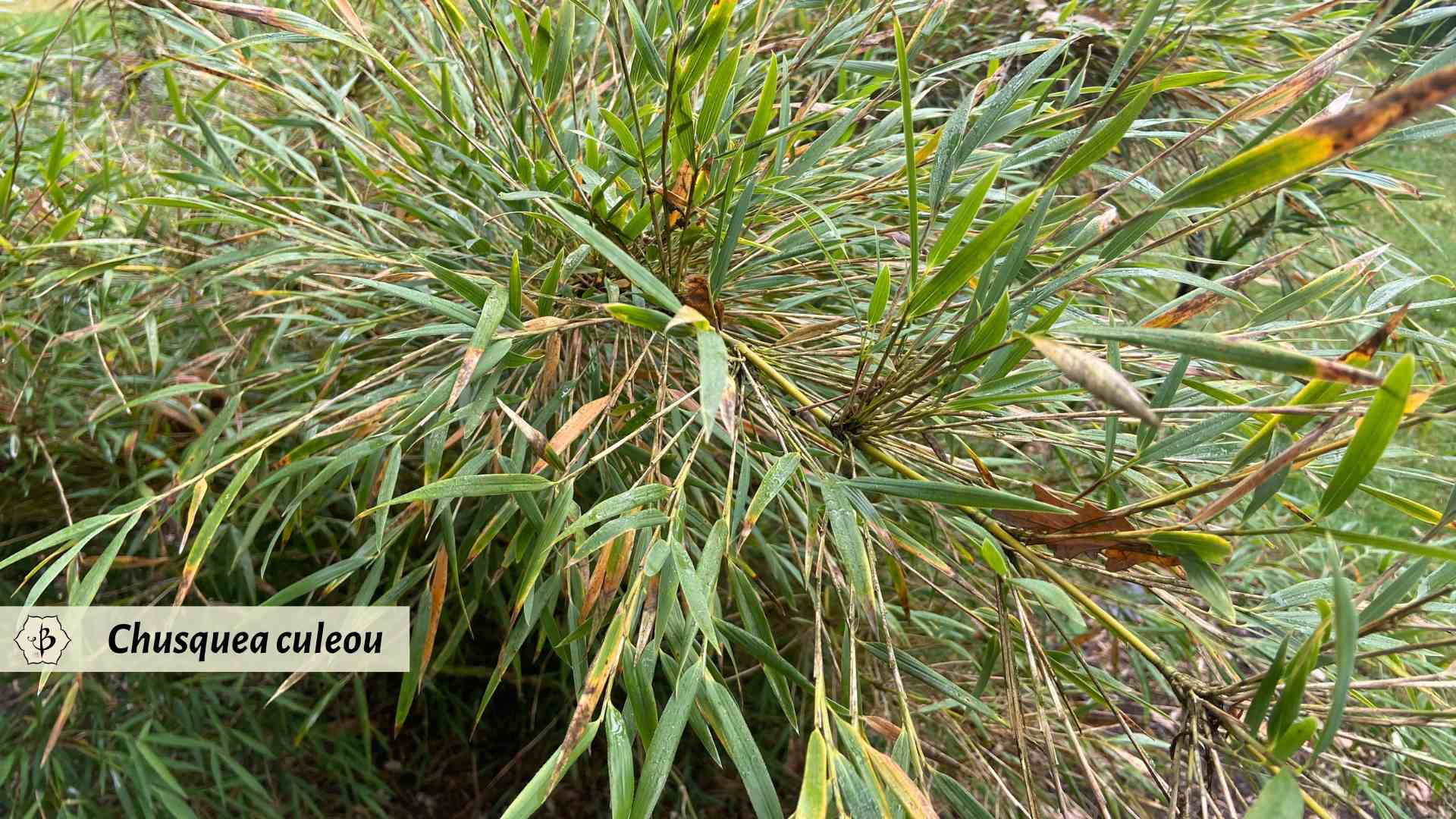
Characteristics of Chusquea
This genus of bamboo is primarily native to the tropics and subtropics of Central and South America. Their endemic range extends from Chile all the way up to Central Mexico. As such, many species of Chusquea will prefer warmer climates where it rarely freezes. But other members of this genus turn out to be surprisingly tolerant to cold winters. Many of them are even hardy down to around 0º F.
This is unusual for a tropical and clumping variety of bamboo. The most cold-hardy of bamboos tend to be running varieties from temperate climates, such as the genus Phyllostachys, from Central China. But there are a few exceptions, including several species of Chusquea, especially the cultivars of C. culeou. And this could make them good candidates for growing in climate zones 7 and 8, as well as any warmer regions.
Chusquea bamboo may be most notable for its solid (rather than hollow) stems, or culms. This makes the plant especially useful for crafts, furniture and light construction. But they have other distinguishing traits as well.
Many kinds of bamboo will produce a certain number of branches that emerge at the nodes, on alternating sides of the culms. Chusqueas are unusual in the large number of branches at each node and for sometimes having verticillate branches that emerge all around the nodes. Also, the branches are often relatively short. Chusquea ciliata, in the feature photo at the top of the article, shows a pretty extreme example of these characteristics.
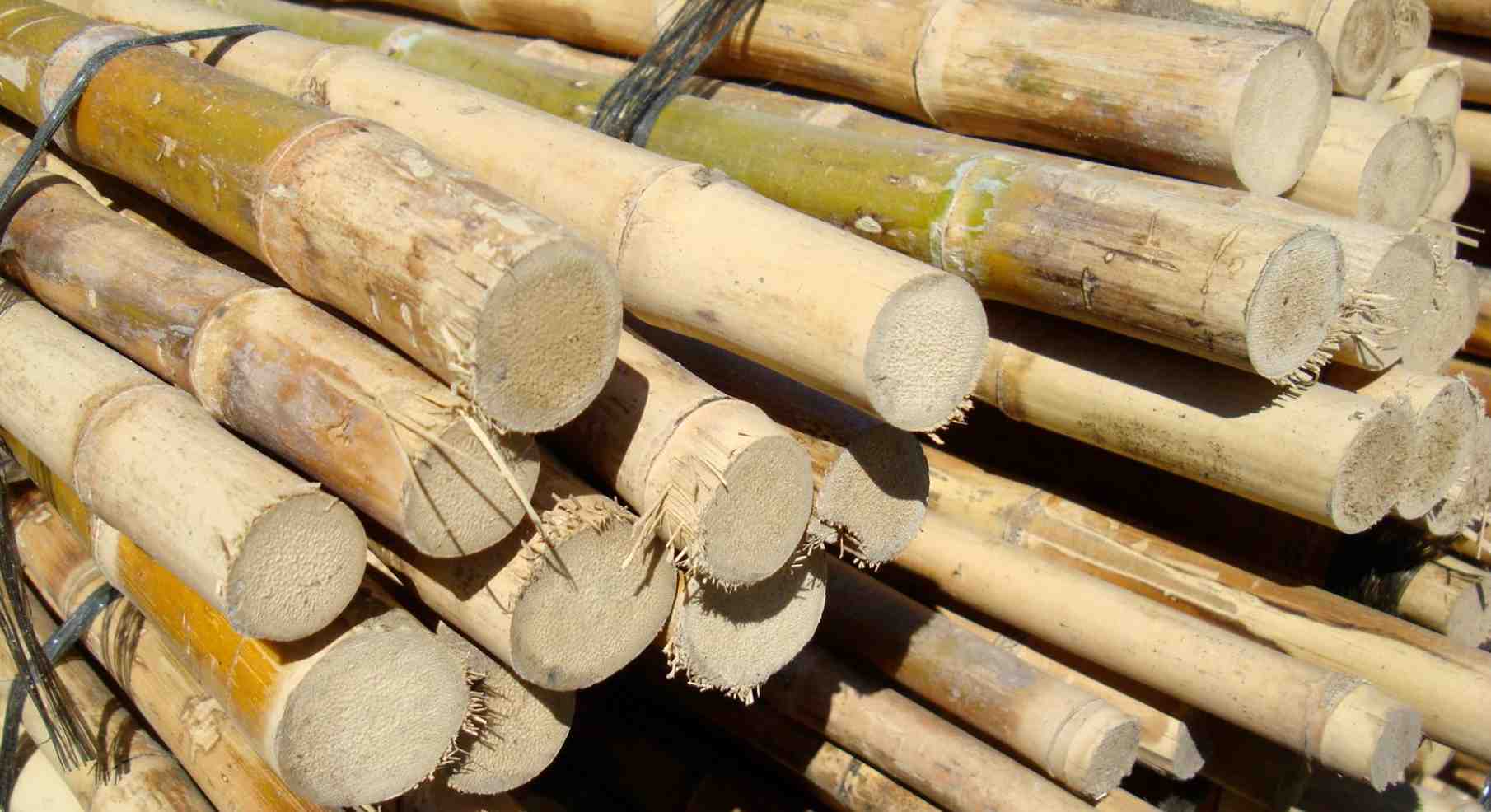
Fun facts
Genus Chusquea holds the rare distinction of having the widest natural distribution of any bamboo, both in terms of latitude (from 47°S to 24°N, southern Chile to Sonora, Mexico) and altitude (from sea level to 4000+ meters). Source: Dr. Lynn G. Clark.
Carl Sigismund Kunth, the famous German botanist, first identified and described the genus in 1822.
The word Chusquea comes from the extinct Muisca language of Colombia, in which Chusquy means something like “ordinary cane of the earth”.
Clumping rhizomes
Like most tropical and subtropical bamboo, Chusqueas have a clumping root system. In botanical terms, they have sympodial or pachymorph rhizomes. This is in contrast to the running bamboos with their monopodial or leptomorph rhizomes. So instead of sending long rhizomes outward and away from the main plant, clumping bamboos like Chusquea have rhizomes that tend to bend upward, u-shaped, sticking close together.
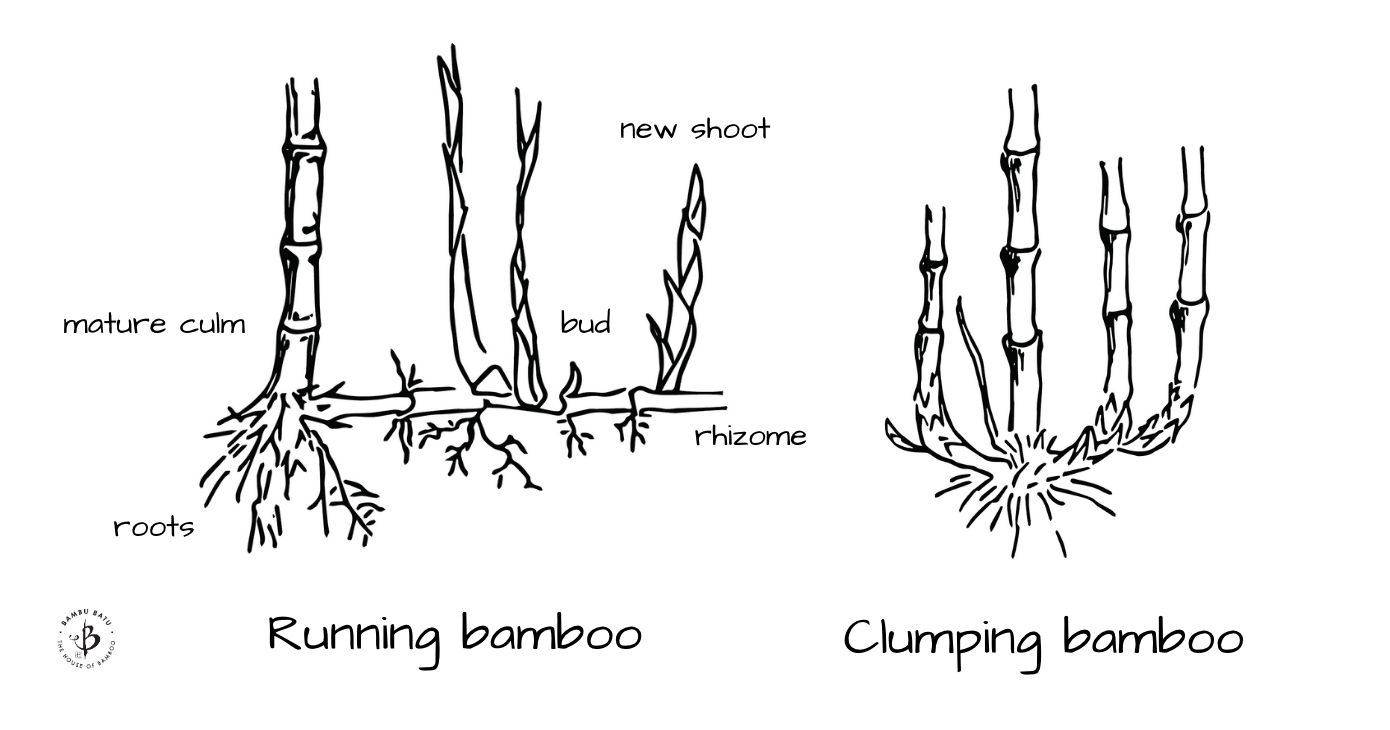
Most gardeners consider this to be a more desirable trait. That’s because they are afraid—and rather rightly so—of the running bamboos which can spread vigorously and become invasive. A clumping bamboo can still grow to an impressive size, but will be much easier to maintain over the years.
Open clumpers
Most clumping bamboo will spread to a certain size, or footprint, and then basically stop spreading. But Chusquea is considered an open clumper. That means it has thicker and shorter u-shaped rhizomes, but rather than reaching a maximum size, the plants have a tendency to keep on spreading out, albeit at a far slower pace than your average running bamboo.
Therefore, it will still be important to check on the roots of your Chusquea plants periodically, to ensure that they’re not outgrowing their space. Depending on how much room you have, you may want to cut back the outermost rhizomes every so often. Once a year is probably adequate, at the same time when you prune the greenery and cut out some of the older, less attractive culms.
Read up on the genus Yushania to learn more about open-clumping bamboo.
Solid culms
Probably the most striking feature of the Chusquea bamboos are their solid culms. Unlike the vast majority of bamboos, and grasses in general, Chusqueas do not have hollow stems. This makes them especially useful for building, as they are even stronger and more resistant to cracking than other types of bamboo. For this reason, they have great economic importance in Latin America. It’s also something of a novelty for collectors and bamboo enthusiasts.
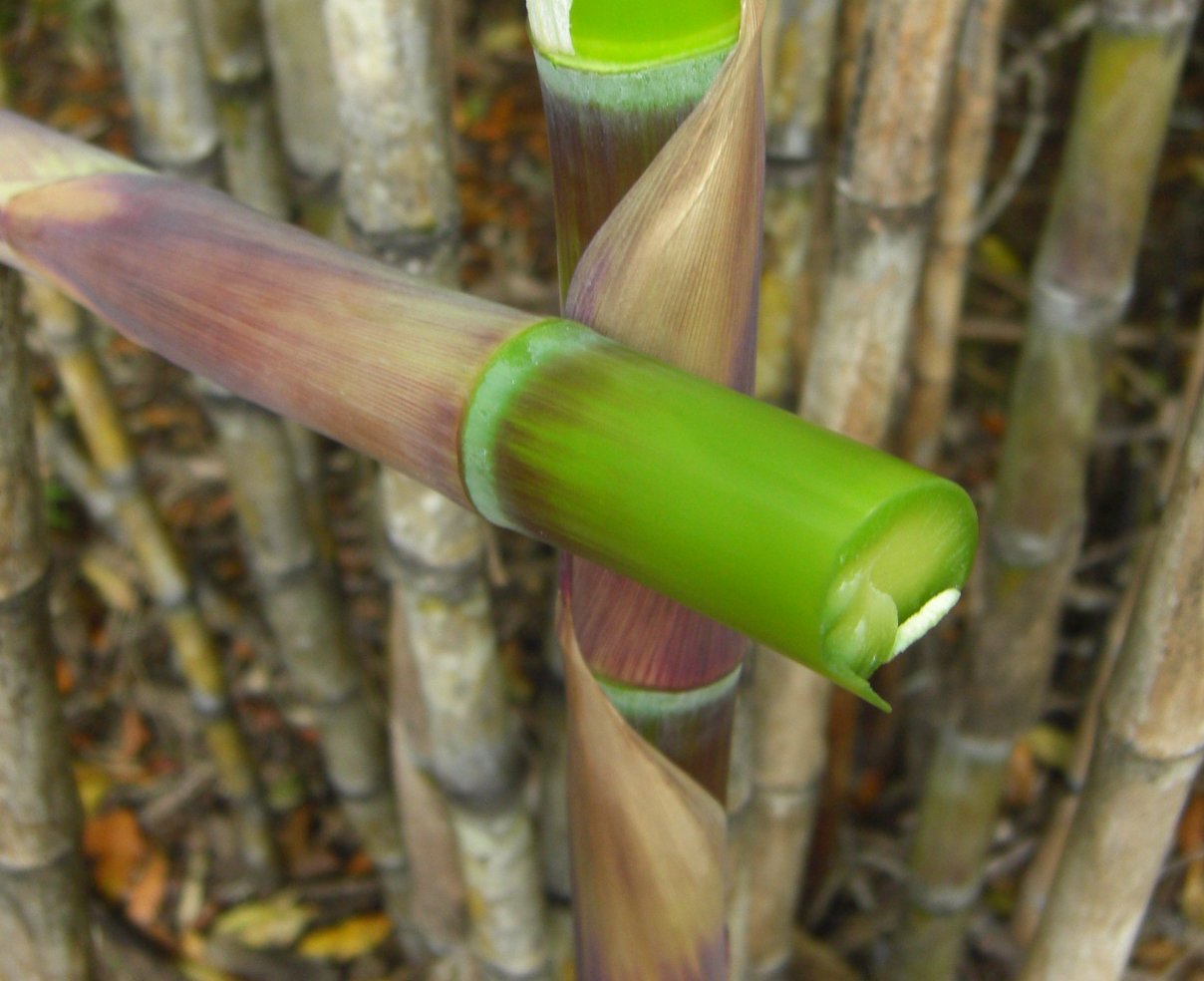
Species of Chusquea
They are still relatively uncommon in the US, but some bamboo specialty nurseries are now carrying a few varieties of Chusquea. Their natural diversity, in the wild, is pretty astonishing, with over 150 species, from 50-foot varieties that could be considered timber bamboo, to pencil-size culms that can’t stand up straight. Here we’ll try to focus on the more popular species for ornamental cultivation, most of which are native to Chile or Mexico.
Larger species
We don’t have any timber varieties of Chusquea available in the US, but there are a couple of species that are notably larger than the rest. In any case, they won’t get as big in a North American climate as they would in their native habitat.
Chusquea fendlerii: This climbing bamboo grows in the higher elevations of the Andes, at around 2000 meters above sea level.
C. gigantea: Not as massive as the name might suggest, but still a very impressive and attractive variety of bamboo. This plant grows upright and can reach 20-30 feet high. The interesting culms, buttery yellow but dark green around the nodes, get up to 1.5 or 2 inches in diameter. Most nodes will produce one very long branch accompanied by several smaller ones, resulting in a bushy profusion of foliage. This makes them very effective as privacy screens. They are cold hardy down to 0º F but can also withstand a lot of heat in the summer. (See image below.)
C. perotensis: One of the largest species of Chusquea, this one is native to the Oaxaca State in southern Mexico, but not really available in the US. This superlative variety can get up to 50 feet tall and 2 inches thick, and the Mexicans use it widely for building and textiles.
C. quila: One of the more common species of Chusquea, found in Chile and Colombia, growing 30 to 40 feet tall with culms about 1-1.5 inches in diameter.
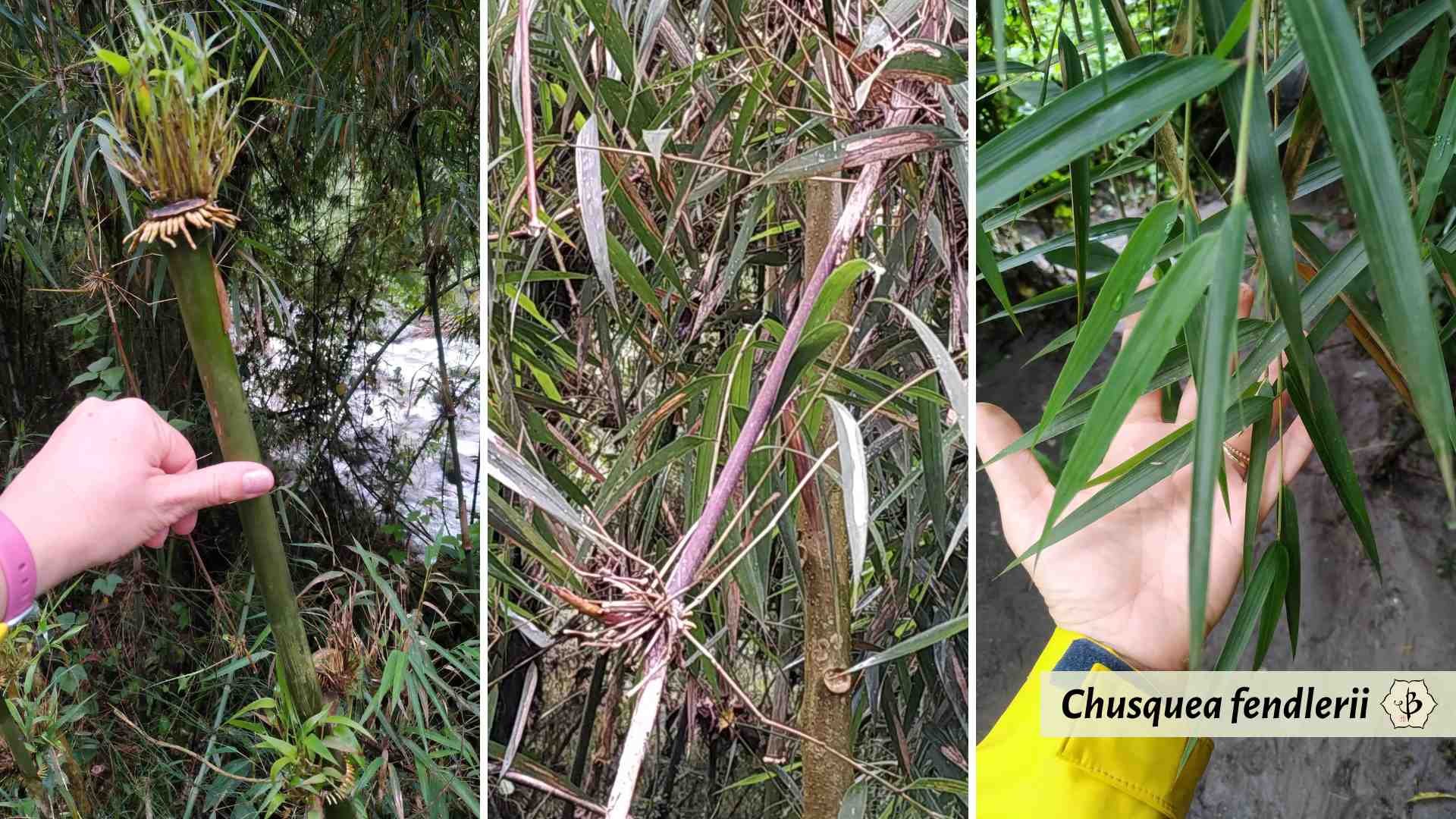
Chusquea culeou
Several cultivars of this species, all native to Chile, have become popular among American bamboo growers. They are somewhat exotic in appearance, and also adaptable to a wide range of climates, from 0º to 100º F. They can also tolerate wetter soil than most other bamboos.
C. culeou ‘Caña prieta’: Attractive, upright culms start out dark brown or black and gradually fade to yellow, but stay dark around the nodes. They grow 10 or 20 feet tall with culms 1 inch thick. Cold hardy to about 0º F.
C. culeou ‘Chilean straight’: Similar to other cultivars but new shoots come up dark green or blueish before fading to yellow. Comparable in size and hardiness.
C. culeou ‘Scandens’: This cultivar is taller than the others, growing up to 20 or 30 feet high, and arching over more at the top. Also hardy down to around 0º F.
Other species
C. meulleri: A petite bamboo from Mexico, with very thin, cascading culms. Small plants grow to 5 or 10 feet tall. Hardy to about 20º F.
C. mimosa: A Brazilian variety with 10 to 20-foot culms, up to 1 inch thick, which eventually arch down. Wispy leaves give this bamboo a very elegant and exquisite appearance.
C. sulcata: This graceful, draping bamboo makes a beautiful centerpiece with its arching culms and thick, delicate foliage. Grows to 10 or 15 feet high, with 1-inch culms. It’s hardy down to about 20º F, preferring some partial shade and climates that don’t exceed 100º in the summer.
Other classifications of Chusquea
In academic circles, members of the genus Chusquea are further classified into one of five different subgenera. Classifications are based mainly on growth habit, branching pattern, and bud arrangement.
- Chusquea: includes multiple subsections, including verticillata, with verticillate branching, meaning that the buds and branches fully encircle the culm, rather than emerging just on one side.
- Rettbergia: monophyletic, having a single common ancestor.
- Swallenochloa: these grow at especially high altitudes, often over 2000 meters.
- Magnifoliae: formerly classified in genus Neurolepis, having little or no culm, commonly found in the páramo.
- Platonia: formerly classified in genus Neurolepis, having little or no culm, commonly found in the páramo.

Further reading
If you’d like to learn more about the many uses and varieties of bamboo, take a look at some of our most popular articles.
- Growing Bamboo: The complete how-to guide
- Best bamboo varieties for your garden
- Preparing your bamboo for winter
- Bamboo anatomy: 9 parts of the bamboo plant
FEATURED PHOTO: Forest of Chusquea in the mountains of Colombia, approx. 1900 meters elevation. Photo by Natalia Reategui.


























I’m looking for a bamboo that would grow tall w/solid clum that can grow great in sandy soil. I would like for it to be used for building if possible. I’m thinking that I might need to get C. gigantea one. Is that what you would suggest?
That sounds like a good choice. I don’t know what climate you’re in, but for construction, you might also consider Bambusa oldhamii.
https://bambubatu.com/bambusa-oldhamii-chinese-timber-bamboo/
I was also wondering if the c. gigantea bamboo is non toxic? That’s if that bamboo is the correct one that I need for the sandy soil.
It’s not exactly toxic, but the shoots are not good to eat. Oldhamii is way better for that. Or most any species of Phyllostachys.
wanting a privacy on acreage near Edmonton, Alberta, Canada ? variety recommended and seed outlet ?
That’s a tough climate for bamboo. The only options that might work will be from the genus Fargesia.
Suitable bamboo for Houston area? Even albostriata which is supposed to be hardy in the mid teens dies out in Houston now almost every winter when feels like temps drop to low teens.
Hmmm. Sasaella albostriata should be able to handle the low teens. Does it die completely? or just lose its leaves and regenerate in the spring? There’s no guarantees with Mother Nature, but Chusquea culeou should tolerate temps close to zero.